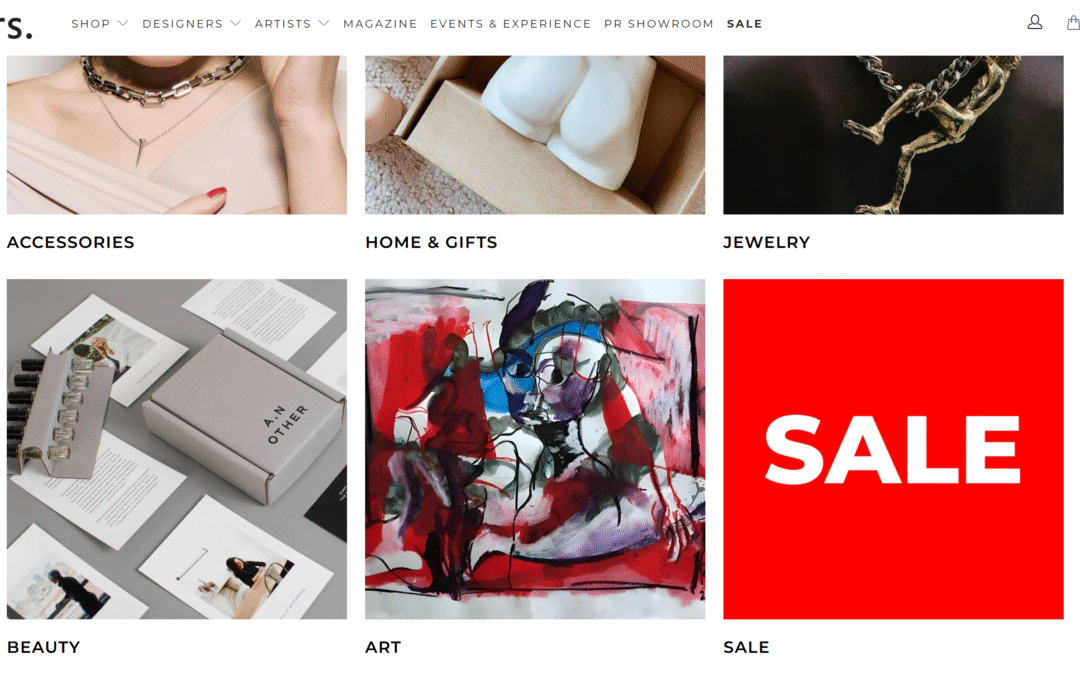
by Purba | Jun 3, 2025 | Shout out |
In an age of fast fashion and mass production, the search for individuality has led many to a more curated, conscious way of dressing. If you’re ready to elevate your wardrobe and truly express your personal aesthetic, it’s time to shop unique clothing that reflects who you are. Unlike mainstream fashion, unique pieces tell a story, support emerging talent, and give you a sense of exclusivity that stands out in any room.
Whether you’re looking for experimental cuts, sustainably crafted fabrics, or bold prints, these one-of-a-kind garments are more than clothes-they’re conversation starters. Investing in unique designs not only enhances your style but also supports the creative vision of independent designers who are reshaping the fashion narrative. Paired with standout designer accessories like sculptural bags or statement jewelry, your outfits go from ordinary to unforgettable.
Why Choose Unique Clothing?
Style with Substance
Express Your Identity
Fashion is personal. Unique clothing lets you reflect your identity without compromise. From avant-garde silhouettes to hand-dyed textiles, you’ll find something that resonates with your vibe-not just the current trend cycle.
Support Emerging Designers
Shopping from platforms that spotlight rising designers helps small fashion businesses thrive. These creators often produce in limited quantities, ensuring that you won’t see your outfit replicated at every corner.
Sustainability at the Core
Fast fashion contributes to waste and unethical labor practices. Many independent designers are committed to eco-friendly materials and responsible production processes-making your purchase both stylish and ethical.
5 Benefits of Shopping Unique Clothing
🌟 Exclusive Style: Your look won’t be duplicated.
🌍 Sustainable Choices: Less environmental impact.
🎨 Creative Design: Fresh perspectives from global artists.
👜 Versatile Pairing: Pairs perfectly with designer clothes for high-fashion styling.
💬 Conversation-Worthy: Every piece has a story.

Figure Every piece has a story. Photo courtesy: Doors.nyc
How to Style Unique Pieces Like a Pro
Make a Statement Without Saying a Word
Unique clothing pieces are best styled with confidence. Balance a bold jacket with neutral trousers, or let an embroidered skirt shine with a monochrome top. Don’t be afraid to mix textures or clash prints-fashion rules are meant to be rewritten.
Discover Fashion Beyond the Mainstream
If you’ve been cycling through the same fast-fashion options, now’s the time to shift. Discovering one-of-a-kind pieces not only revives your wardrobe but reinvents how you see yourself in the mirror. Add a distinctive edge to your look, spark creativity, and connect with fashion on a deeper level.
Visit curated platforms like Doors.nyc to explore an ever-growing selection of fresh, original designs. From eye-catching garments to elegant accessories, you’ll find fashion that celebrates artistry, not algorithms.
For more inspiration, check out our feature on how accessories can elevate minimalist outfits.
Explore your next favorite fashion find today-and let your clothes speak volumes.
This article is proudly inspired by the vision behind Doors.nyc, a platform dedicated to celebrating independent fashion designers from around the world.
You can write to us at fashionnovationfd@gmail.com
We read and publish your articles!
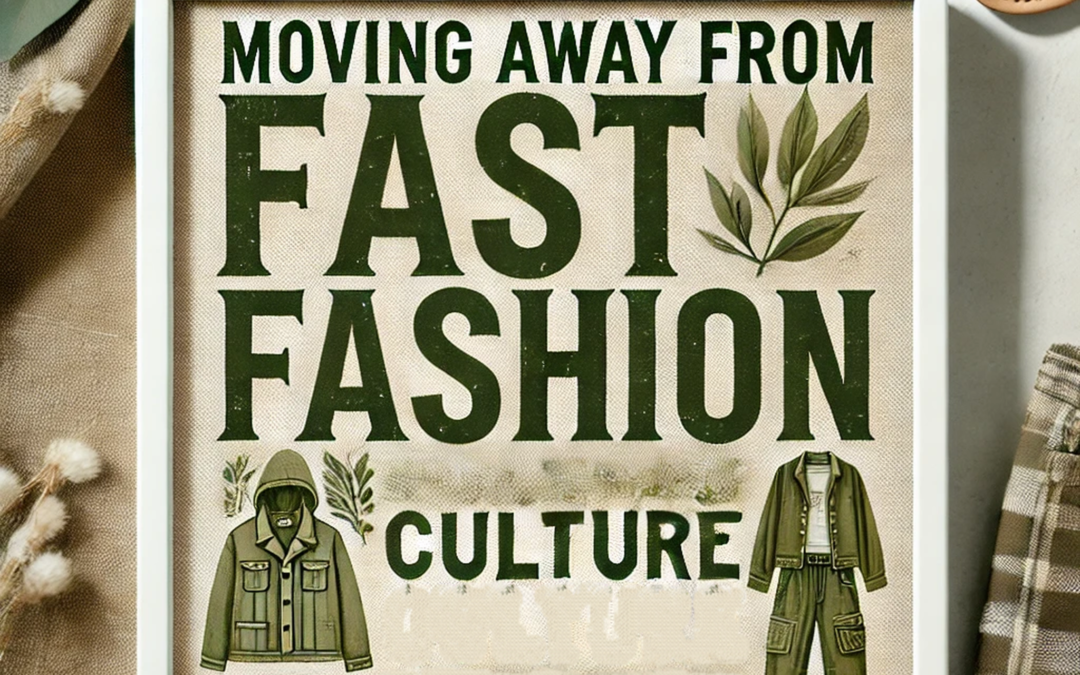
by Purba | Mar 11, 2025 | Academic |
In a world where trends change at the speed of a click and clothing is mass-produced at a rapid pace, Fast Fashion has become the norm. It’s tempting to follow the cycle of constant newness, but this culture of disposable clothing comes with a heavy price – both for the planet and for our personal style. As we become more aware of the environmental and ethical impacts of our fashion choices, it’s time to rethink our approach. “Fashion Detox” is about breaking free from the fast fashion trap and embracing a more sustainable, mindful way of dressing. Moving away from fast fashion culture is essential in third-world countries due to its exploitation of cheap labor, leading to poor working conditions and low wages. It contributes to environmental degradation, as waste and pollution from the industry disproportionately affect vulnerable communities. Overconsumption strains local resources and perpetuates unsustainable practices. Additionally, fast fashion undermines traditional craftsmanship, threatening local economies and cultural heritage. Shifting to sustainable practices promotes fair labor, environmental health and long-term economic stability. Transitioning away from fast fashion culture requires a shift in mindset, habits and consumption patterns. Here are actionable steps to help make this transition:
- Educate Yourself :
It involves gaining a deeper understanding of the impact of fast fashion on the environment, workers, and society. Knowledge can be gained by researching how fast fashion contributes to pollution, waste and unethical labor practices. And also exploring documentaries, books and articles that shed light on sustainable fashion and ethical production. Learning about sustainable materials, fair trade and circular fashion principles. The user should familiarize themselves with brands that prioritize transparency and ethical practices. Following activists, designers and organizations who promote slow fashion on social media for regular insights. By educating themselves, they can become more conscious of the consequences of their purchases and empowered to make informed decisions. Knowledge is the foundation for embracing more sustainable consumption patterns.
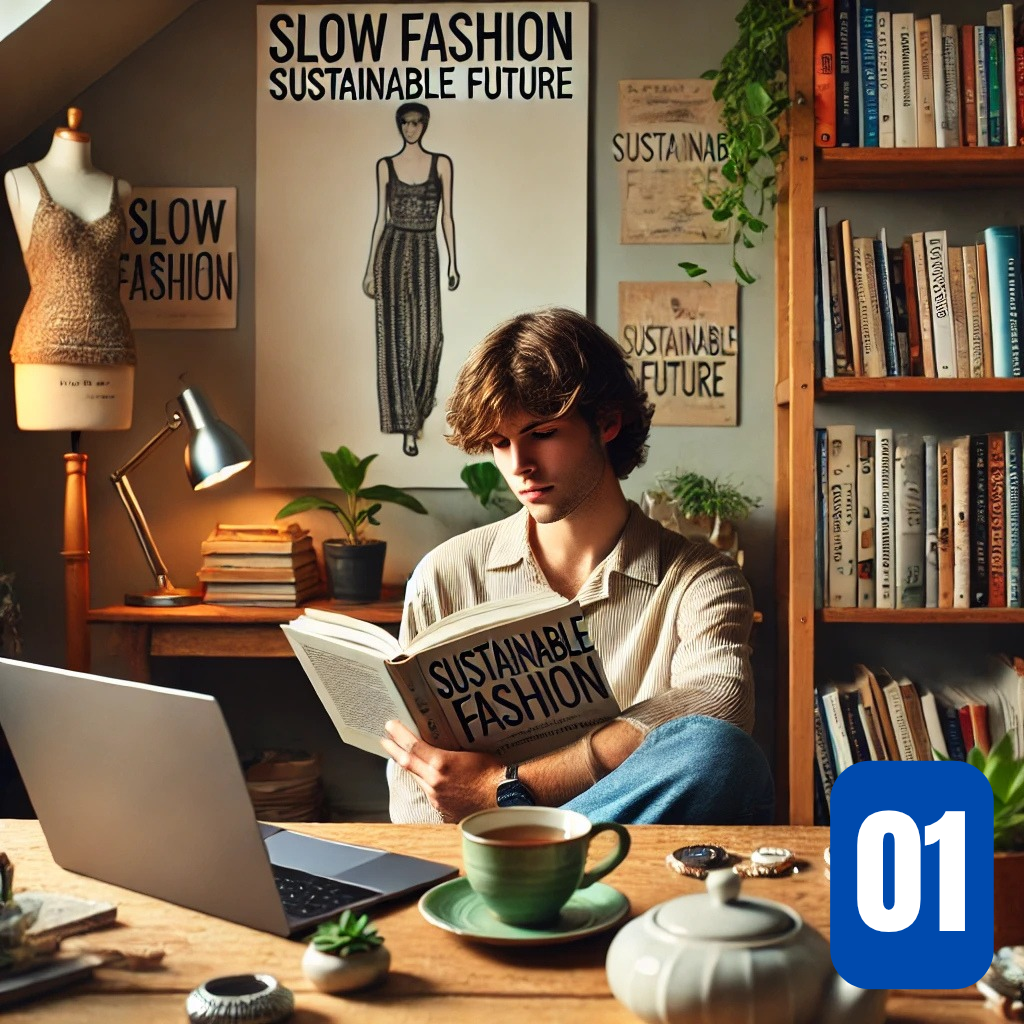
Educate Yoursel
- Adopt a “Less Is More” Mindset :
Transitioning away from fast fashion starts with embracing minimalism in the user’s wardrobe. Instead of chasing trends, users should focus on quality over quantity—choosing timeless, versatile pieces that last longer. A “Less Is More” mindset encourages mindful purchasing, reducing impulse buys and ensuring every item serves a purpose. This shift not only saves money but also minimizes waste and supports sustainable fashion practices.

Adopt a “Less Is More” Mindset
- Shop Secondhand :
One of the best ways to move away from fast fashion is to embrace secondhand shopping. Thrift stores, vintage shops and online resale platforms offer unique, high-quality clothing at affordable prices. Buying pre-loved fashion reduces waste, extends the life cycle of garments and minimizes the demand for new production, which is often resource-intensive. Shopping secondhand not only helps the planet but also allows the users to express their personal style with one-of-a-kind pieces.
Shop Secondhand
- Support Ethical Brands :
Supporting ethical brands means prioritizing clothing companies that are transparent about their production processes, prioritize fair wages and use sustainable materials. Brands with certifications like Fair Trade or GOTS (Global Organic Textile Standard) are most applicable in this regard. Looking for labels indicating organic, recycled or ethically sourced materials. Purchasing from these brands not only ensures quality but also supports ethical labor practices and environmentally friendly production. This approach aligns user’s shopping habits with values of sustainability and fairness, helping to shift away from fast fashion culture.
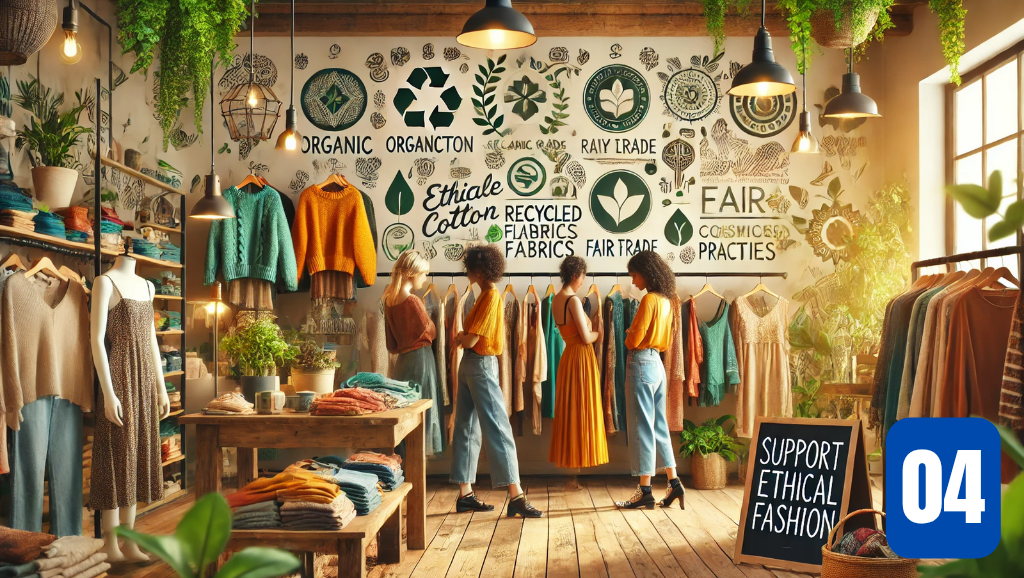
Support Ethical Brands
- Take Care of Your Clothes :
Extending the life of the user’s garments is a simple yet powerful way to combat fast fashion culture. It can be started by following care labels to wash clothes at the correct temperature and avoid harsh detergents that weaken fibers. Air-dry garments instead of using a dryer to reduce wear and tear. Mend small damages like loose buttons or minor tears rather than discarding the item. Store the clothes in a proper way by folding knits to prevent stretching and using padded hangers for delicate fabrics. Rotating wardrobe to evenly wear items and prevent overuse of favorites. Regularly clean shoes and accessories to maintain their longevity. By treating the clothes with care, a user not only save money but also reduce the demand for constant replacements, which helps the environment.
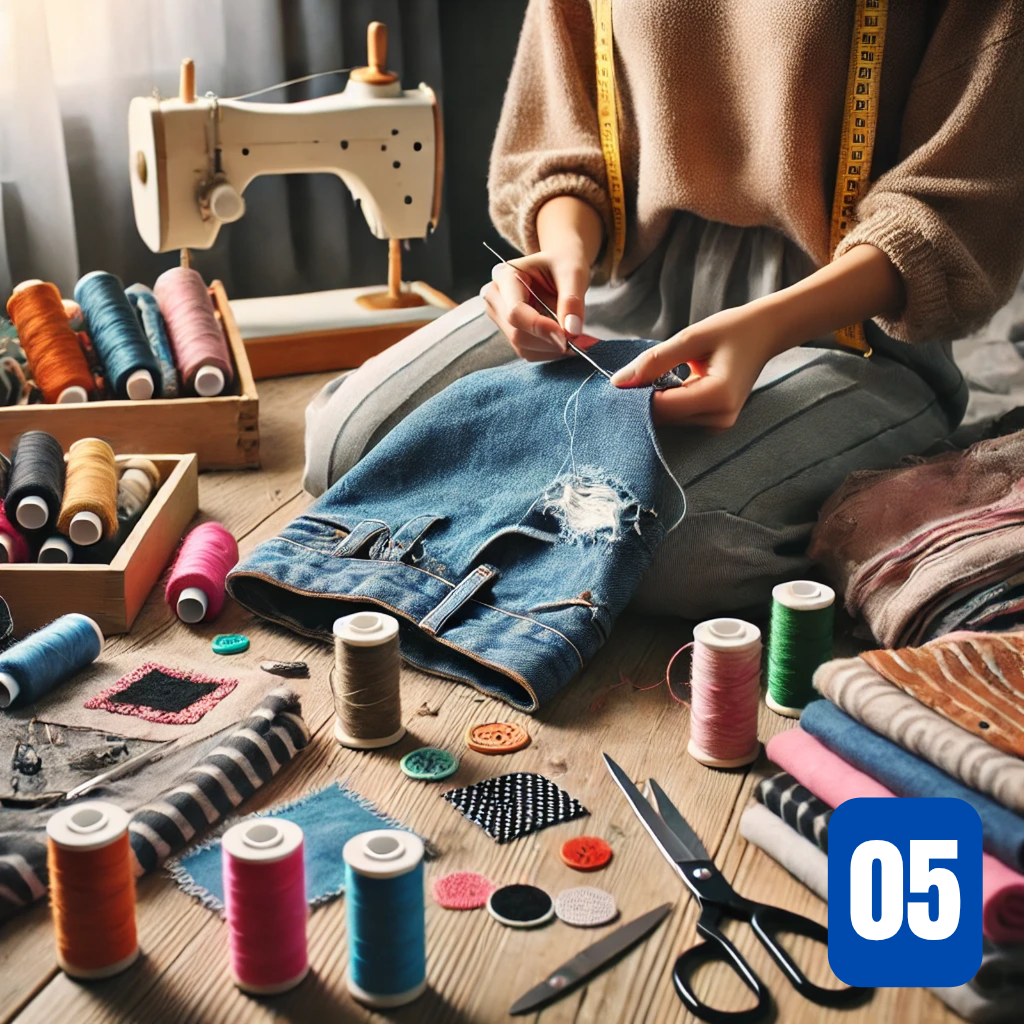
Take Care of Your Clothes
- Rent or Borrow Clothes :
It is an excellent way to reduce reliance on fast fashion while embracing sustainable practices. Instead of buying new outfits for special occasions or events, consider renting clothing from rental platforms or borrowing from friends and family. This approach allows the users to enjoy variety and style without contributing to overproduction or waste. Renting ensures that garments are reused multiple times, extending their lifecycle and reducing environmental impact. For casual or daily wear, borrowing from loved ones can foster a sense of community and sharing. By choosing this option, users can also save money and avoid cluttering their wardrobe with items that might only be worn once. Supporting rental businesses promotes a circular economy and helps normalize alternative consumption patterns.
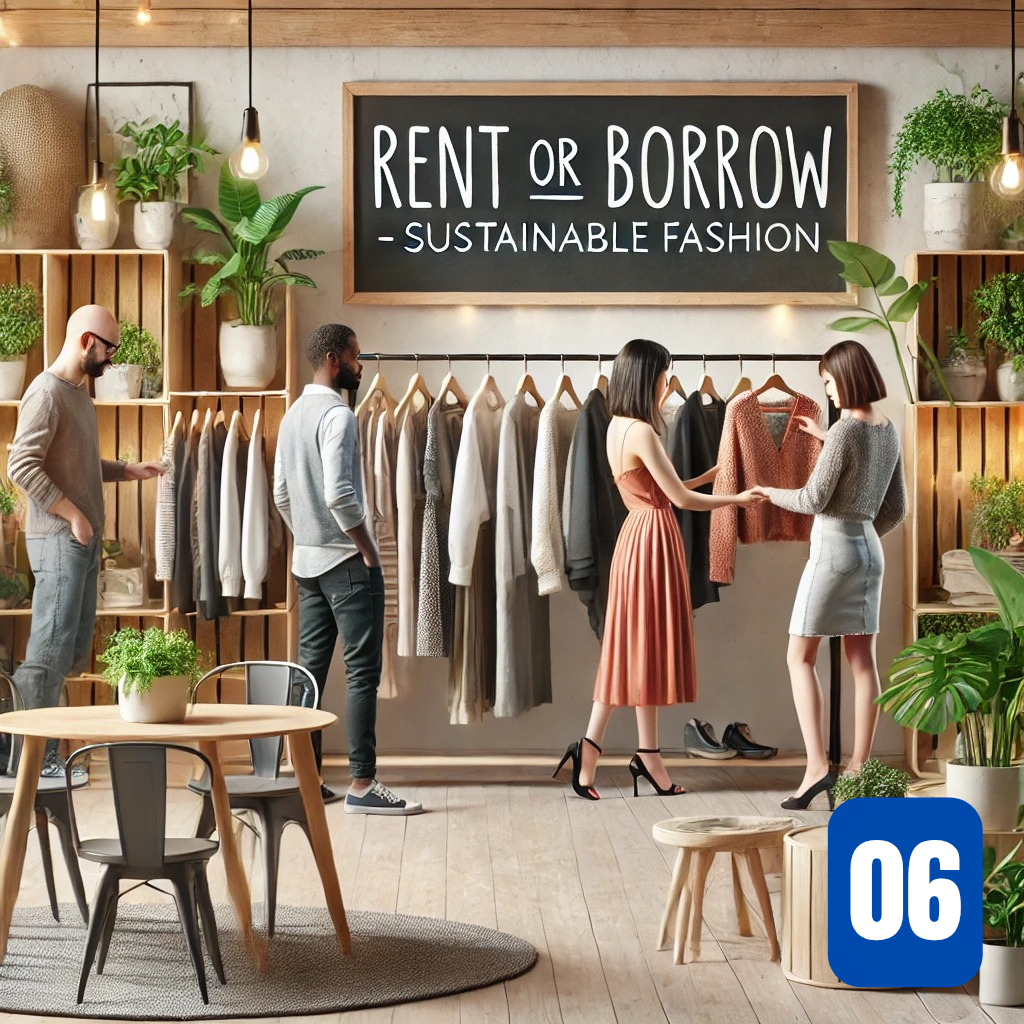
Rent or Borrow Clothes
- Be a Conscious Consumer :
To transition away from fast fashion, users should focus on being a conscious consumer. This involves carefully evaluating the brands and products they support. By looking for items that are made from sustainable materials, produced ethically and designed to last. Prioritize quality over quantity, avoid impulse purchases and choose secondhand or upcycled options when possible. Being a conscious consumer is about aligning their values with their spending habits, reducing waste and supporting ethical practices in the fashion industry.
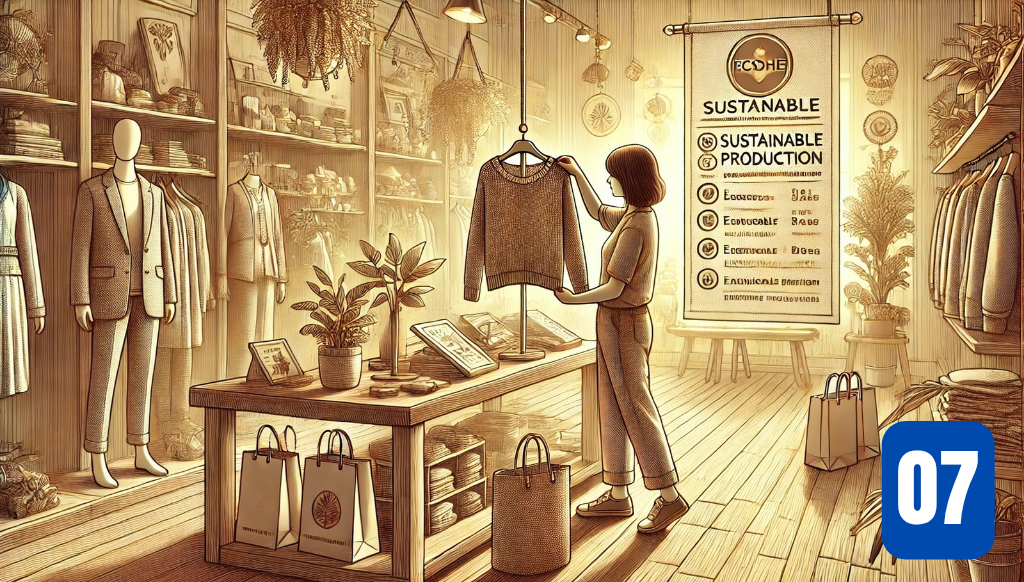
Be a Conscious Consumer
Be a Conscious Consume
- Embrace DIY and Upcycling :
It involves reimagining old or unused clothing to reduce waste and cultivate a more sustainable wardrobe. Instead of discarding worn-out or outdated items, users can transform them into something fresh and unique. This could mean turning an old pair of jeans into shorts, adding patches to a jacket or sewing decorative elements onto a plain t-shirt. Learning basic sewing, stitching or crafting skills can make this process enjoyable and rewarding. Additionally, upcycling allows the users to express personal creativity and create one-of-a-kind pieces that reflect their style. By embracing DIY, they can extend the life of their clothes, save money and reduce the demand for new fast fashion products. It’s a practical way to minimize waste and align the wardrobe with sustainable values.
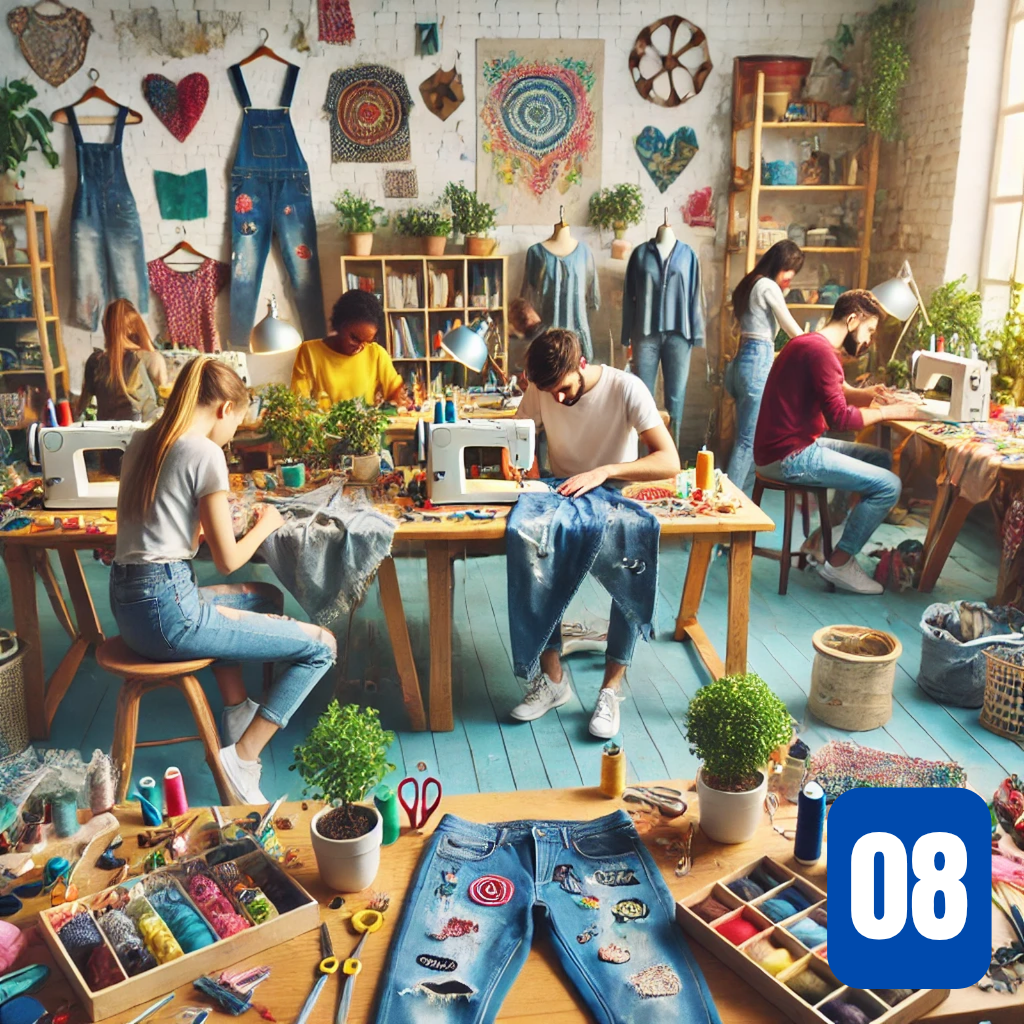
Embrace DIY and Upcycling
Embrace DIY and Upcyclin
- Spread Awareness :
That involves educating others about the environmental and social impacts of fast fashion. One can start it by sharing facts and stories on social media, emphasizing the harmful practices in garment production and the benefits of sustainable alternatives. They can also engage in conversations with friends, family and colleagues to discuss the hidden costs of cheap clothing, such as exploitative labor and pollution. Moreover, supporting and amplifying the voices of ethical fashion advocates and organizations; hosting or attending events like clothing swaps, documentary screenings or sustainability workshops. Encourage transparency by asking brands about their supply chain practices. The goal is to inspire others to rethink their buying habits and collectively demand better standards in the fashion industry.
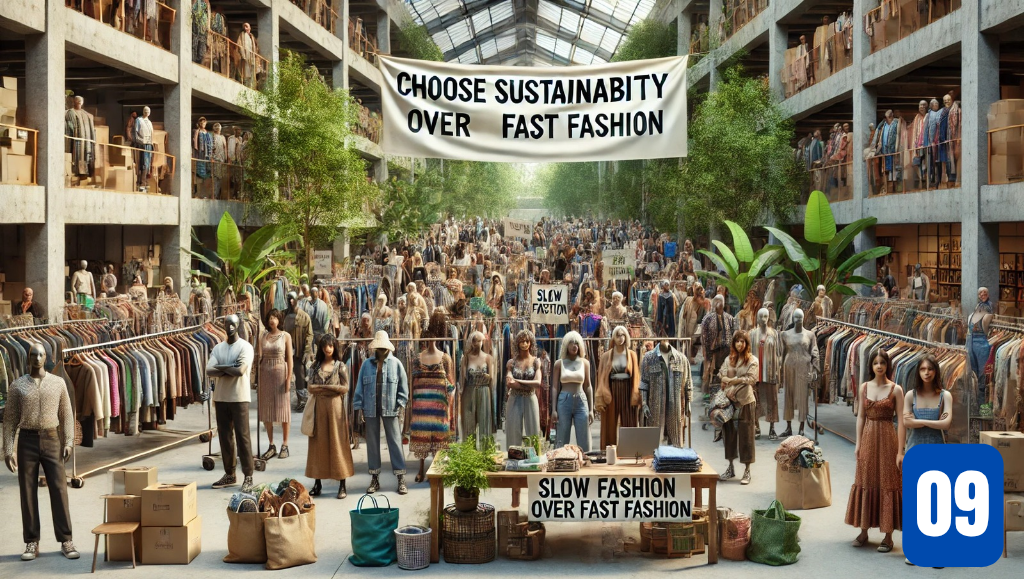
Spread Awareness
- Measure Your Impact :
It involves understanding the environmental and social consequences of users’ clothing choices to make more informed decisions. They should research the carbon footprint, water usage and waste generated by fast fashion brands. Using tools like online carbon calculators to estimate their wardrobe’s environmental impact. Analyze how often they wear items and identify pieces that go unused. By tracking their shopping habits, they can note how frequently they purchase and discard clothes. Consider the broader implications, such as labor conditions and resource exploitation behind fast fashion production. By quantifying their impact, they gain a clearer picture of how their choices contribute to global issues. This awareness can motivate more sustainable behaviors, like choosing quality over quantity and supporting ethical brands. Measuring their impact turns abstract concerns into tangible goals for reducing consumption and waste.
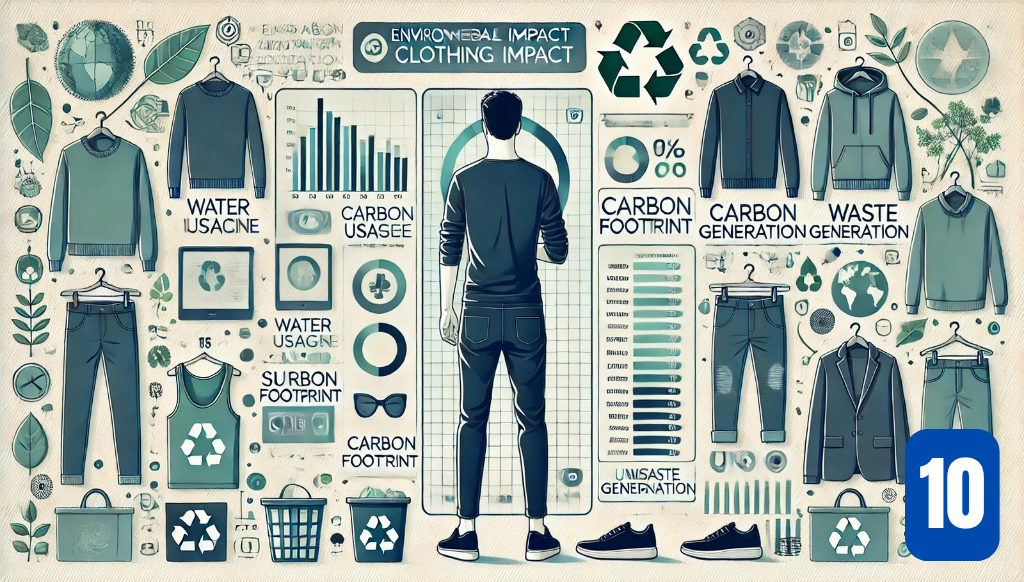
Measure Your Impact
Embracing sustainable alternatives to fast fashion is not just an environmental responsibility but also a step toward social and economic justice. By supporting ethical practices, we can empower workers, protect natural resources and foster local industries. It is a collective effort that requires mindful consumer choices and advocacy for fair policies. The journey toward a Fashion Detox is personal, but it’s one that has the power to transform both our closets and our world for the better. Transitioning away from Fast Fashion ensures a more equitable and sustainable future for all. Together, we can break the cycle of exploitation and environmental harm. Let’s choose timeless style over temporary trends and be part of a fashion revolution that values longevity over speed.
SUDIPTO BANIK
University: Bangladesh University of Textiles (BUTEX)
Dept: Textile Fashion & Design (TFD) Batch: 47 ; ID: 202116019.
Feel free to write to us at fashionnovationfd@gmail.com
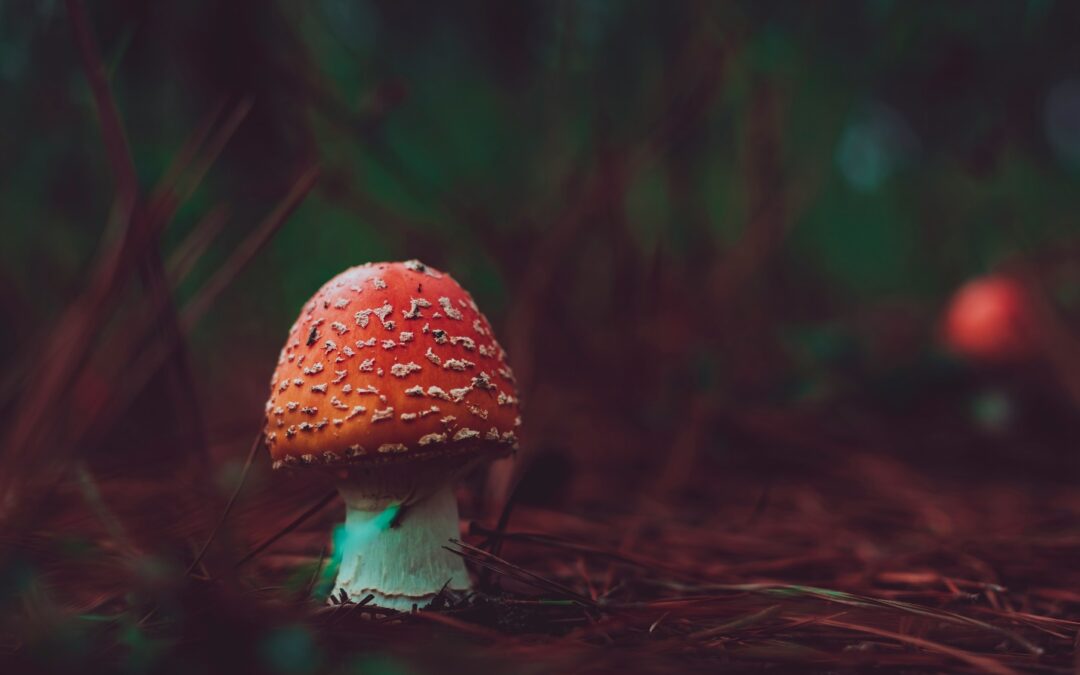
by Purba | Oct 3, 2024 | Top fashion news |
Mushrooms have captivated humanity for centuries, not just for their unique properties but also for their vibrant colors, intriguing textures, and distinct forms. Whether they are admired in the wild or used in various cultural traditions, mushrooms continue to fascinate us in many ways. In the world of fashion and lifestyle, they serve as a surprising yet powerful source of inspiration. Their organic forms and hues offer designers and creatives an endless array of possibilities to explore.
Among these intriguing fungi is the Amanita muscaria, also known as the fly agaric mushroom, which stands out with its iconic red cap and white specks. This mushroom has become emblematic in various cultures, symbolizing everything from folklore to modern-day art. Although the Amanita muscaria has been spotlighted in alternative therapies, it is essential to appreciate its aesthetic value, especially for fashion enthusiasts and those interested in nature-inspired design. Let’s delve into how mushrooms, like the fly agaric, have influenced the world of fashion and design, while also touching on the unique role they play in natural ecosystems. Interestingly there are fly agaric mushroom for sale where you can check out the wide varieties and take inspirations. So, without further adieu, let us dive into the world of mushrooms and what they have to offer.
Mushrooms: Nature’s Unsung Designers
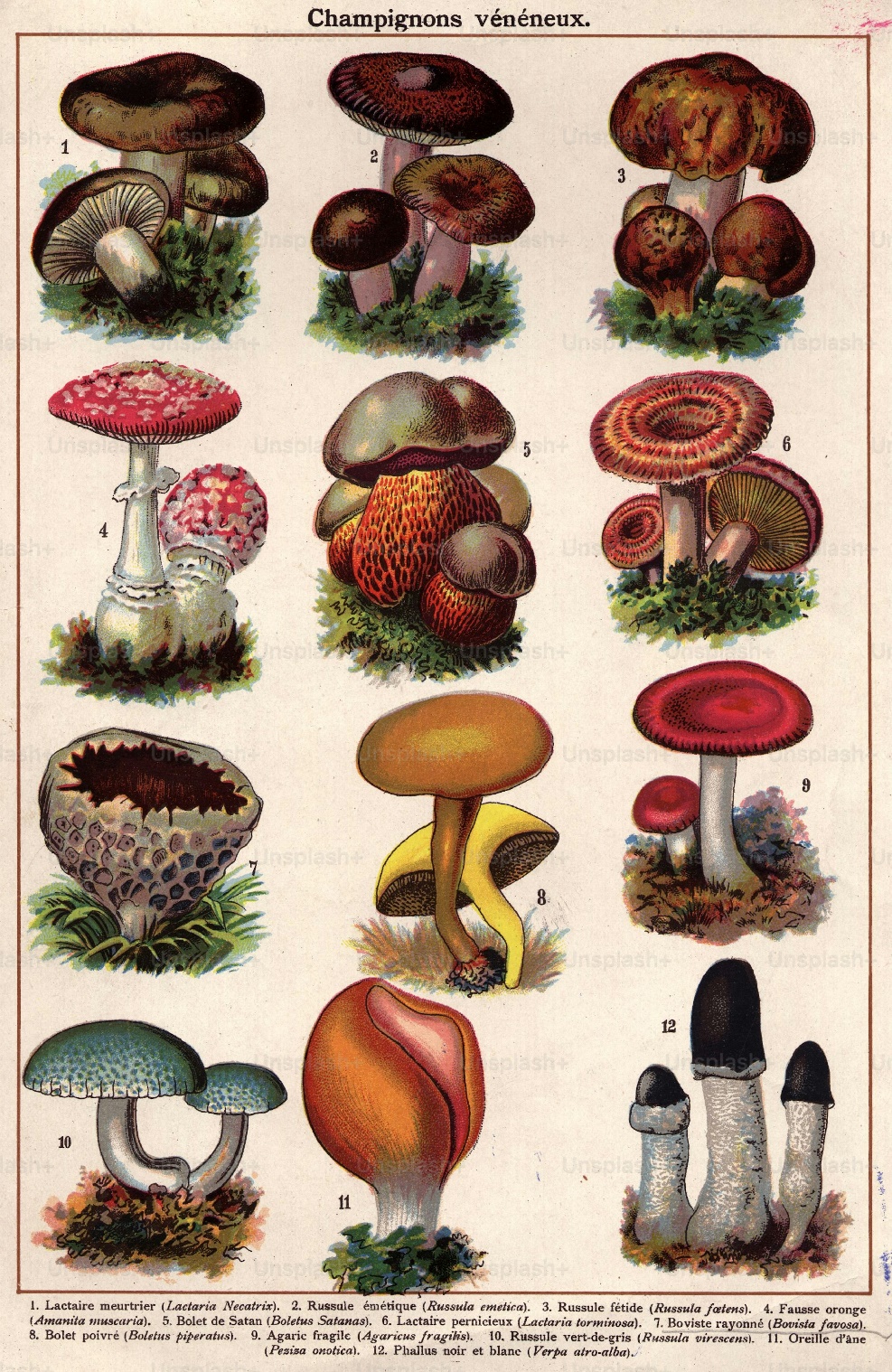
From morels to chanterelles, the rich diversity of mushrooms offers endless inspiration for design and creativity. Photo courtesy: Unsplash.
Mushrooms are not just organisms; they are a celebration of nature’s ability to create textures and colors that captivate the human eye. From the deep earthy tones of morel mushrooms to the vibrant yellows of chanterelles, mushrooms provide a rich source of visual inspiration for the fashion industry. The patterns on their caps, the organic flow of their gills, and the uniqueness of their shapes are often mirrored in haute couture designs and textile creations.
In recent years, designers have taken cues from mushrooms for more than just their outward appearance. Some have incorporated mushroom-based materials, such as mycelium, into sustainable fashion practices. Mycelium, the root-like structure of fungi, can be used to produce leather alternatives that are eco-friendly and cruelty-free, aligning with the growing demand for sustainable and ethical fashion.
Amanita Muscaria: Icon of Folklore and Fashion
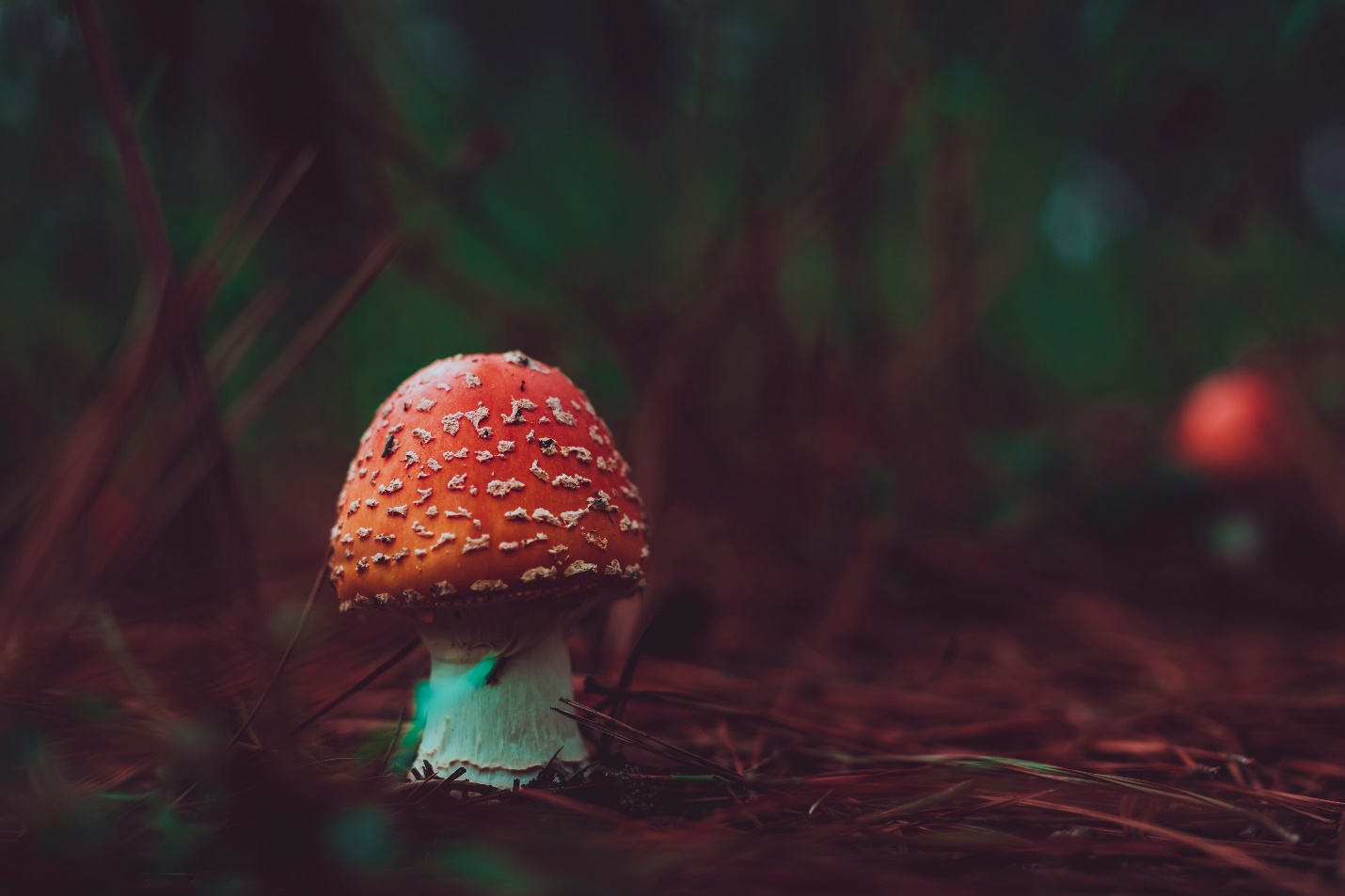
The iconic Amanita muscaria with its striking red and white appearance – a symbol of nature’s enchanting beauty. Photo courtesy: Unsplash.
Amanita muscaria, with its striking red cap dotted with white, is one of the most recognized mushrooms in the world. It has appeared in numerous artistic and cultural representations, from children’s books to video games, embodying mystery and enchantment. The mushroom’s vibrant colors make it an easy muse for those looking to create bold and daring designs.
Its colors—red, white, and sometimes orange—have often been used in fashion as an expression of audacity and whimsy. Designers who draw from nature frequently turn to the bright palette of the Amanita muscaria for inspiration, as it evokes both a sense of playfulness and a connection to the mystical elements of the natural world.
Though known for its potential psychoactive properties and dietary supplements and alternative therapies. Microdosing, the Amanita muscaria is perhaps more famous for its visual impact. Its enchanting appearance has graced runways, and its iconic colors have been mimicked in textiles, accessories, and even footwear. For fashion designers and enthusiasts, the fly agaric mushroom is a reminder of how the natural world can spark creativity, offering a palette that is both vibrant and timeless.
Mushrooms in Modern Design: More than Just Looks
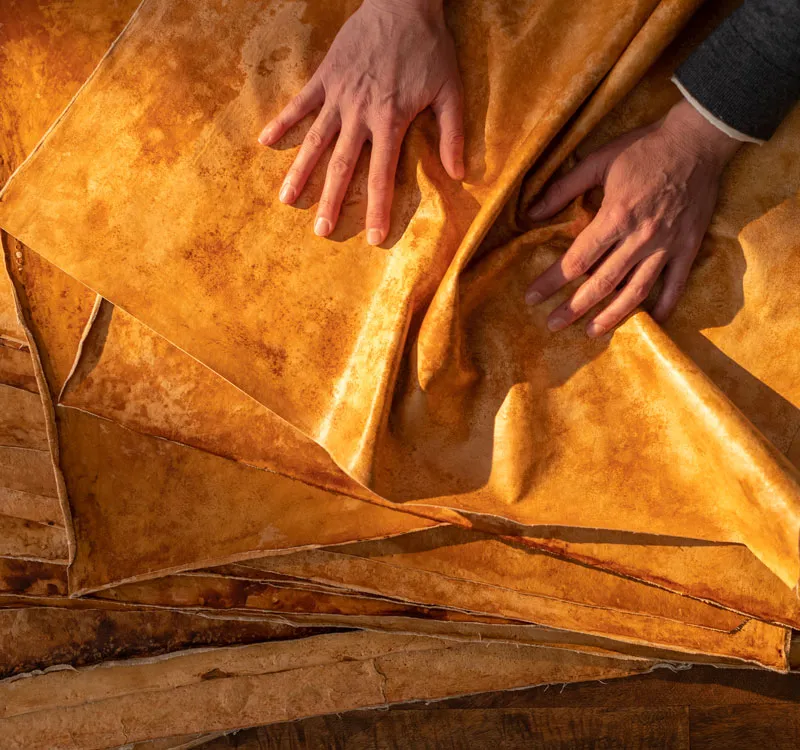
Innovative mycelium leather, an eco-friendly alternative to traditional materials, bridging sustainability and fashion. Photo courtesy: Smithsonian Magazine.
While the colors and textures of mushrooms like Amanita muscaria provide endless creative inspiration, they also play an essential role in modern fashion innovation. The sustainable fashion movement has embraced mushroom-based materials for their biodegradability and eco-conscious qualities. Designers are using mushroom-derived textiles to create high-fashion pieces that are not only stylish but also environmentally responsible.
Mycelium leather is a perfect example of this trend. It’s a durable, flexible, and sustainable alternative to traditional leather, making it a popular choice for eco-conscious designers. The rise of mushroom leather in fashion aligns with the industry’s shift toward more sustainable practices. The natural durability of mycelium, combined with its eco-friendly production process, makes it an attractive alternative to traditional materials that have a heavier environmental footprint.
A Fashionable Future Rooted in Nature
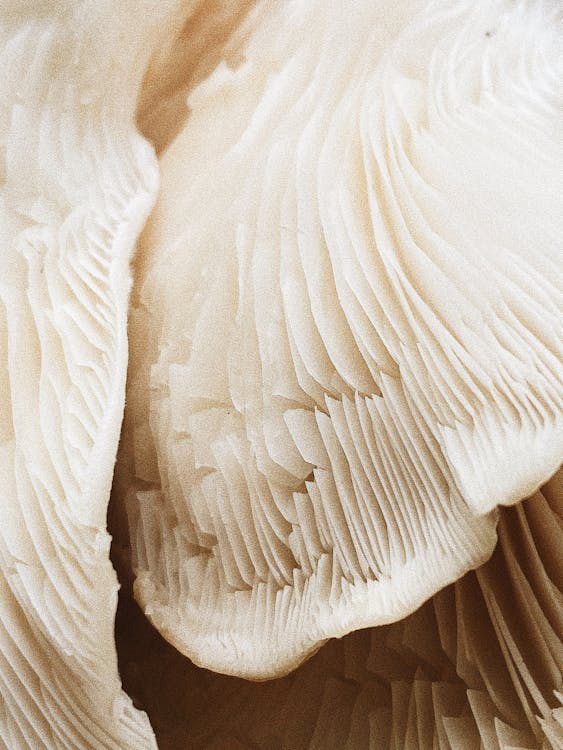
Beautiful texture of oyster mushroom. Photo courtesy: Pexels.
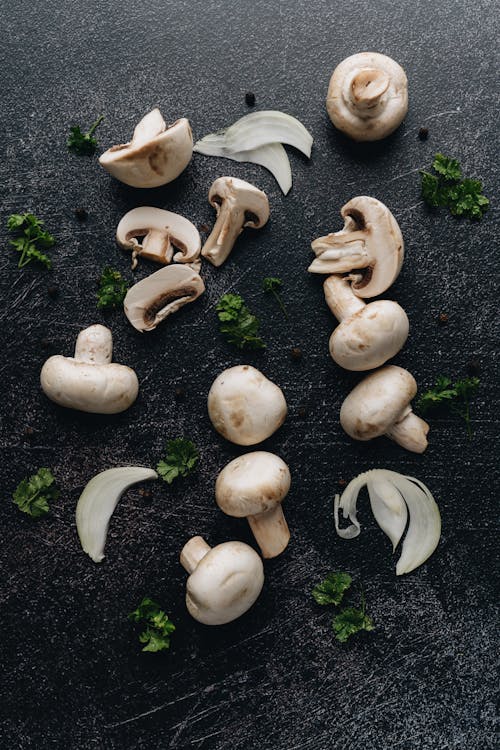
Beautiful button mushroom. Photo courtesy: Pexels.
As fashion continues to evolve, it’s clear that mushrooms will play an increasingly significant role in the industry. Whether they inspire designs through their textures and colors or become the material of choice for sustainable products, mushrooms offer a unique blend of beauty and practicality.
Amanita muscaria, in particular, serves as a striking symbol of nature’s ability to blend art with function. While it holds a special place in alternative therapies, its most lasting contribution may very well be in the world of fashion and design. The mushroom’s visual allure has inspired generations of designers, and its presence on fashion runways and in sustainable fashion initiatives signals a promising future for nature-inspired design.
While mushrooms like Amanita muscaria might spark curiosity for their medicinal and therapeutic potential, it’s crucial to approach such claims with caution and ensure any products or therapies are researched thoroughly and legally verified. Nonetheless, the mushroom’s undeniable aesthetic appeal ensures its continued influence in the creative world, particularly in fashion and lifestyle, where nature’s beauty often takes center stage.
Conclusion: Drawing Inspiration from Nature
In a world where sustainability and creativity are becoming increasingly intertwined, mushrooms like the Amanita muscaria offer a perfect example of how nature can inspire fashion in both form and function. Whether through their vibrant colors, intricate patterns, or sustainable potential, mushrooms have a unique role to play in the future of design.
For those looking to explore the fascinating world of mushrooms, it’s worth considering their many layers—both literally and figuratively. From their role in ecosystems to their impact on human culture, mushrooms continue to inspire and intrigue, and their place in the fashion world is only growing stronger.
You can also read:
Cactus Leather Will Save 1 Billion Animals Killed for Fashion!
Creativity in Fashion Design
Crafting Iconic Designs: How Fashion Designers Can Harness the Power of Adobe Express
Travel in Style: Fashion Tips for the Jet-Setting Trendsetter
Discover the World of Luxury Fragrances: A Deep Dive into the Alluring Perfume Brands
Feel free to write to us at fashionnovationfd@gmail.com
We read your articles and publish!
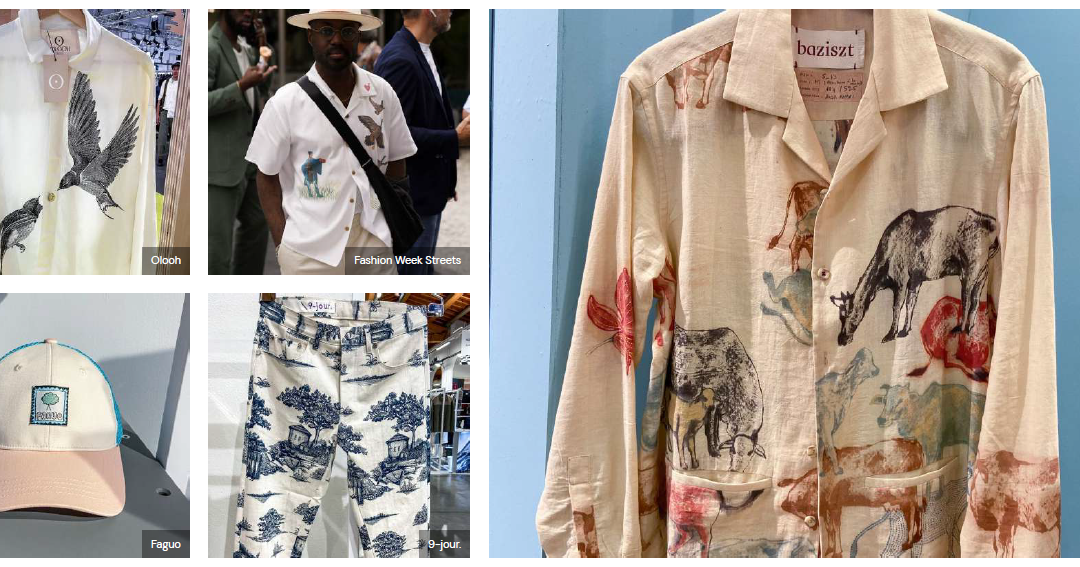
by Purba | Apr 4, 2024 | Academic, Top Trends |
As we delve into the Spring/Summer 2024 season, there’s a noticeable shift towards an artistic and crafted feel, emphasizing connection and self-care. This report serves as a guiding light for your buying strategy, offering insights into the trends shaping the fashion landscape.
This trend report is by Rose Hudson, published in WGSN. Fashionnovation is proud of collecting the works from WGSN and present them towards you.
Editor’s pick: crafted patterns
As consumers increasingly gravitate towards building sustainable and personalized wardrobes, brands are tapping into traditional crafting techniques to meet this demand. From block printing to direct-to-garment painterly patterns, and even drawing inspiration from #Tapestry influences, there’s a resurgence of interest in artisanal methods.
Building upon last season’s trend of repurposed materials, the current focus shifts towards authenticity. This authenticity is not only reflected in the choice of techniques but also resonates throughout street style. Brands are embracing the beauty of handmade craftsmanship and the unique character it brings to each piece.
By incorporating these traditional crafting techniques into their collections, brands are not only contributing to sustainability but also offering consumers a chance to express their individuality through their clothing. It’s a celebration of heritage, craftsmanship, and the timeless appeal of handmade designs. 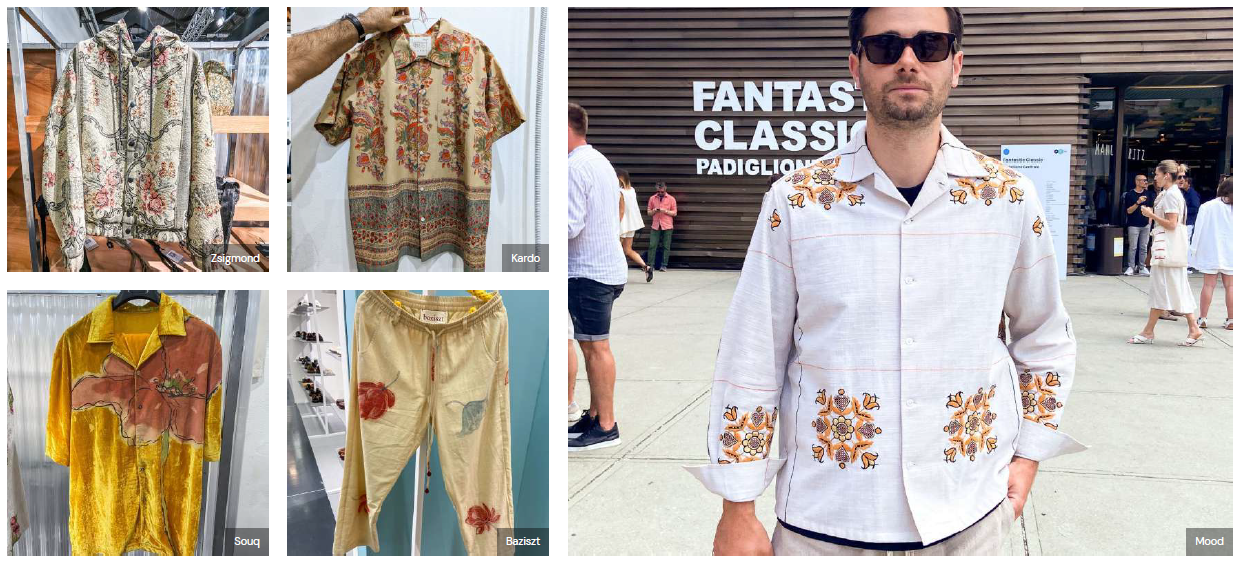
Figure 1: Crafted pattern is a major trend in 2024
Personal connection
In today’s fast-paced world, there’s a growing emphasis on self-care and reflection. Brands are responding by incorporating people-centric prints aimed at promoting self-acceptance and inclusivity. These prints are designed to resonate with individuals on a deeper level, fostering a sense of connection and belonging in line with the expanding self-care market.
Drawing inspiration from calming and feel-good themes, these prints aim to create a sense of wellness and serenity. By tapping into our Serenity & Self-Care Fast Track, brands are aligning with the growing demand for products that prioritize mental and emotional well-being.
Moreover, these prints also embrace the concept of body neutrality, emphasizing acceptance and appreciation of all body types. By promoting messages of self-love and inclusivity, brands are not only staying relevant but also contributing to a more positive and uplifting fashion landscape.
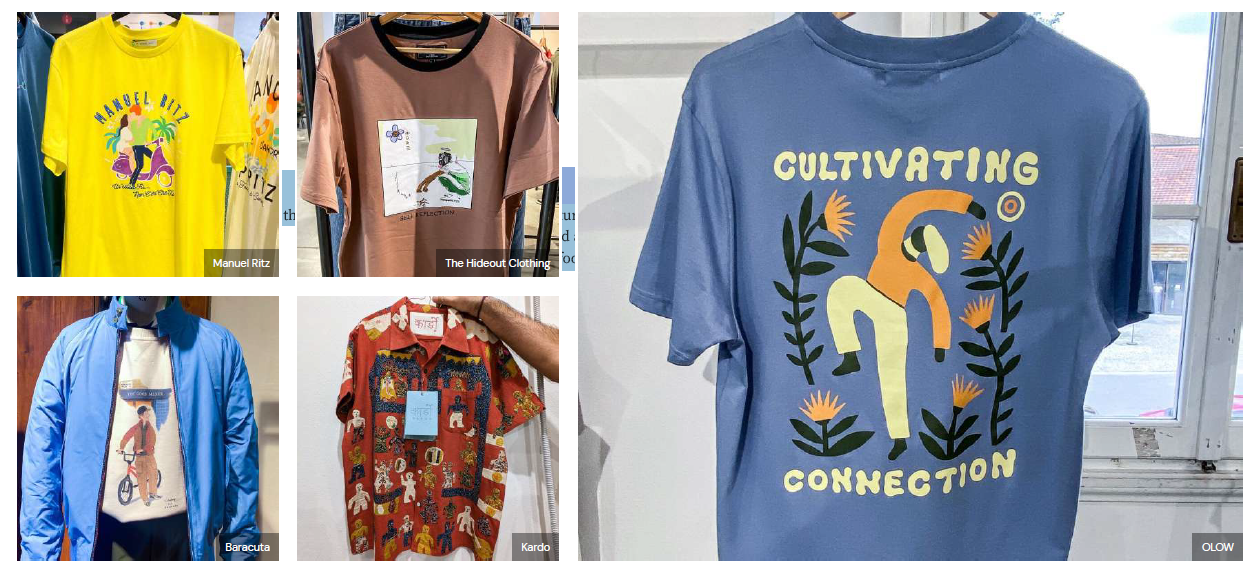
Figure 2: Personal connection is always a famous trend. Even in 2024. This is classic.
Pastoral parklife
#ParkLife encapsulates the revival of everyday countryside aesthetics and pastoral animal motifs, including ducks, horses, butterflies, and various bird species. This trend exudes a rustic, nostalgic charm with a distinctively handcrafted feel.
Fuelled by the surge in upcycling deadstock fabrics like tapestries and vintage tea towels, #ParkLife incorporates landscape #ToileDeJouy prints, illustrated placements, and artistic renditions. These elements contribute to a sense of authenticity and craftsmanship, adding depth to the overall aesthetic.
For the more traditional consumer, key motifs such as #Birds and horses take center stage, evoking a sense of timeless elegance. Meanwhile, younger consumers are drawn to the inclusion of pastoral animals such as goats and cows, infusing a playful and contemporary twist into the design narrative.
Embrace the charm of #ParkLife in your wardrobe or home decor, and immerse yourself in the beauty of countryside-inspired motifs and handcrafted detailing.
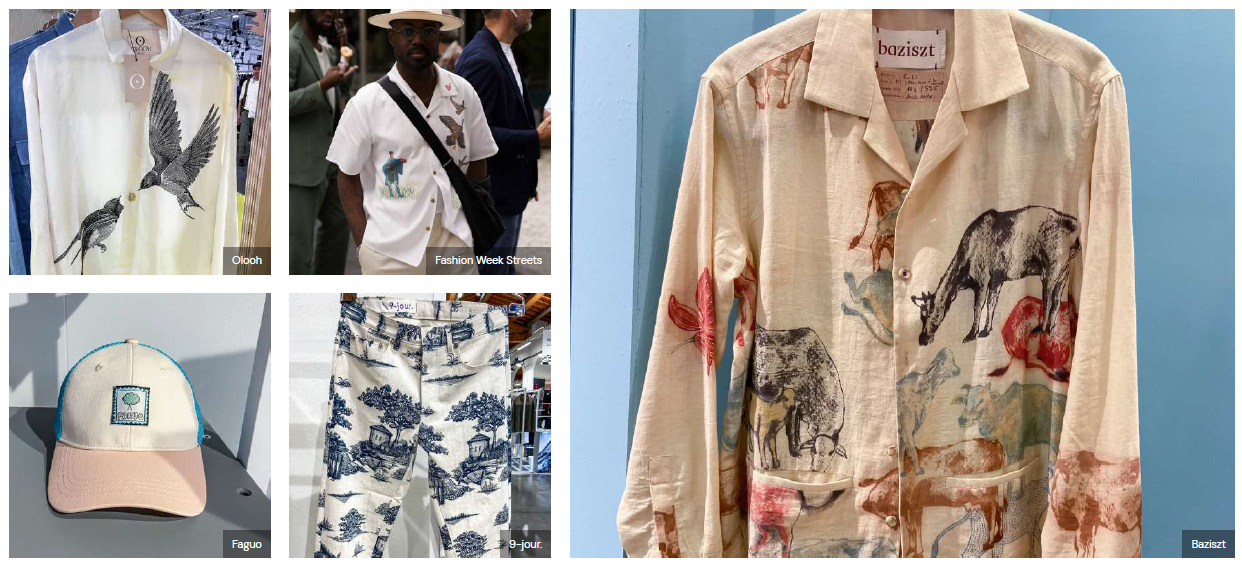
Figure 3: Pastoral parklife trend-2024.
Mineral textures
Texture prints are evolving with a sophisticated and mineral-inspired edge, incorporating intricate digitalized prints and dye patterns that redefine #NaturesTexture. Drawing inspiration from our digital waves callout, exhibitors are exploring textures found in ice and water, seeking to capture the dynamic and mesmerizing qualities of these natural elements.
Innovative brands like Hul Le Kes from the Netherlands and Pas Une Marque from France are leading the charge by developing prints crafted with natural dyes derived from rust. This innovative approach not only adds depth and richness to the prints but also aligns with the growing demand for sustainable and eco-friendly practices in fashion.
With a focus on texture and detail, these prints offer a contemporary take on nature-inspired motifs, inviting consumers to connect with the beauty and complexity of the natural world in new and unexpected ways. 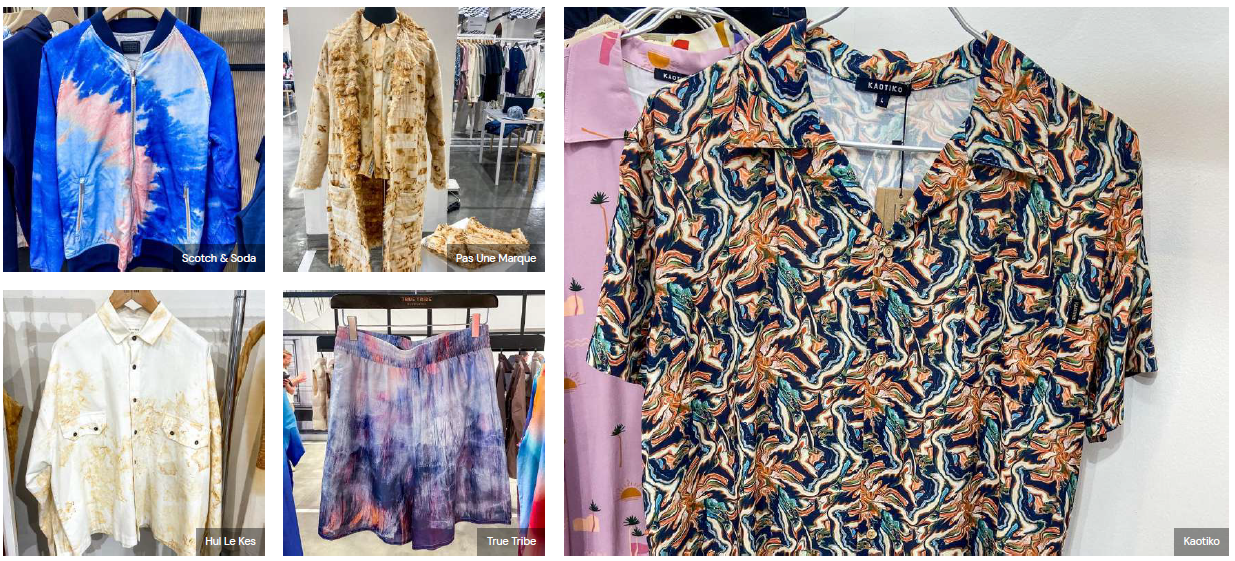
Figure 4: Mineral Texture Trend-2024
Botanicultural
The growing appreciation for nature and the rise of self-care hobbies like gardening serve as the inspiration for this important print and graphic narrative. As arts and crafts become increasingly integrated into the menswear market, #CraftedDetails and #Personalization take center stage, expanding on the #Horticool themes with a DIY aesthetic.
Think of embroidered floral motifs and vintage inspirations that evoke a sense of nostalgia and eco-consciousness. These elements create a connection to our Spring/Summer 2024 capsule collection, Nature Artist, which celebrates the beauty of the natural world through artistic expression.
With a focus on handcrafted details and personalized touches, this trend invites individuals to infuse their wardrobe with elements of nature and creativity. Whether it’s adding embroidered patches to a denim jacket or customizing a shirt with botanical prints, #CraftedDetails and #Personalization offer a unique and meaningful way to connect with nature in everyday life.
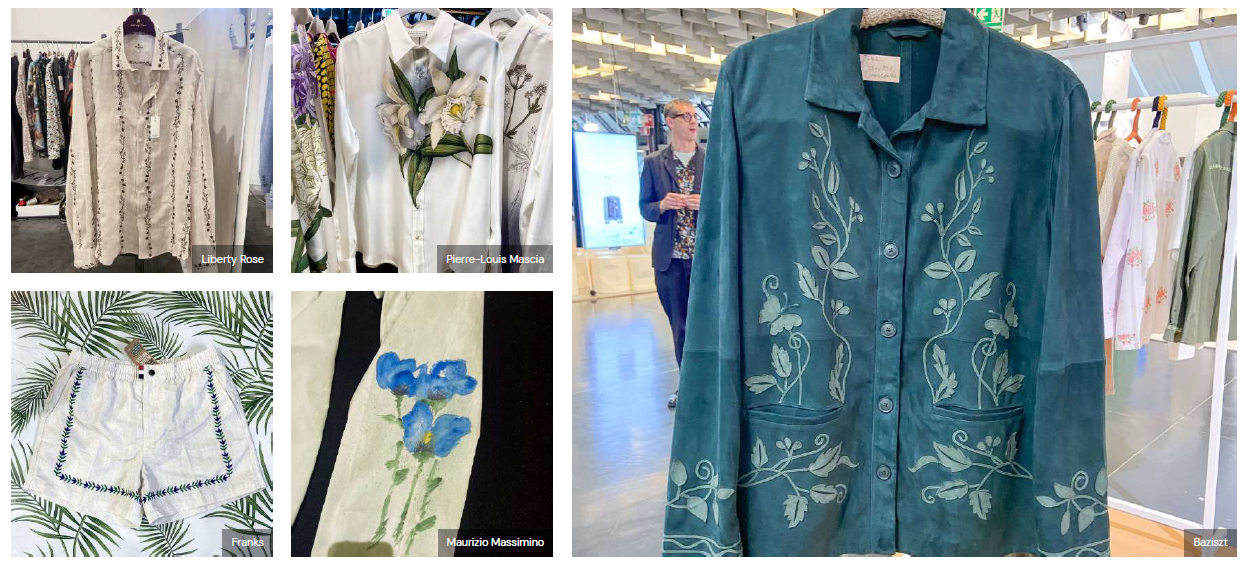
Figure 5: Botanicultural trend 2024.
Sunset snacks
The emergence of #FoodInFashion and #DrinksInDesign motifs has caught our attention, tying into our Self-care snack forecast story. These trends evoke a hedonistic vibe, expanding on party room themes to encompass after-work drinks and foods that encourage relaxation and the enjoyment of life’s simple pleasures.
While comfort food continues to hold relevance, there’s a shift towards healthy summer harvest themes. Think vibrant fruit labels and personified cartoon characters adorning clothing and accessories, adding a playful and refreshing touch to fashion.
This trend celebrates the joy of indulging in delicious treats and savoring moments of relaxation, whether it’s unwinding with a refreshing drink or enjoying the bounty of summer fruits. With #FoodInFashion and #DrinksInDesign, fashion becomes a feast for the senses, inviting individuals to embrace the hedonistic side of life and indulge in a little culinary-inspired style.
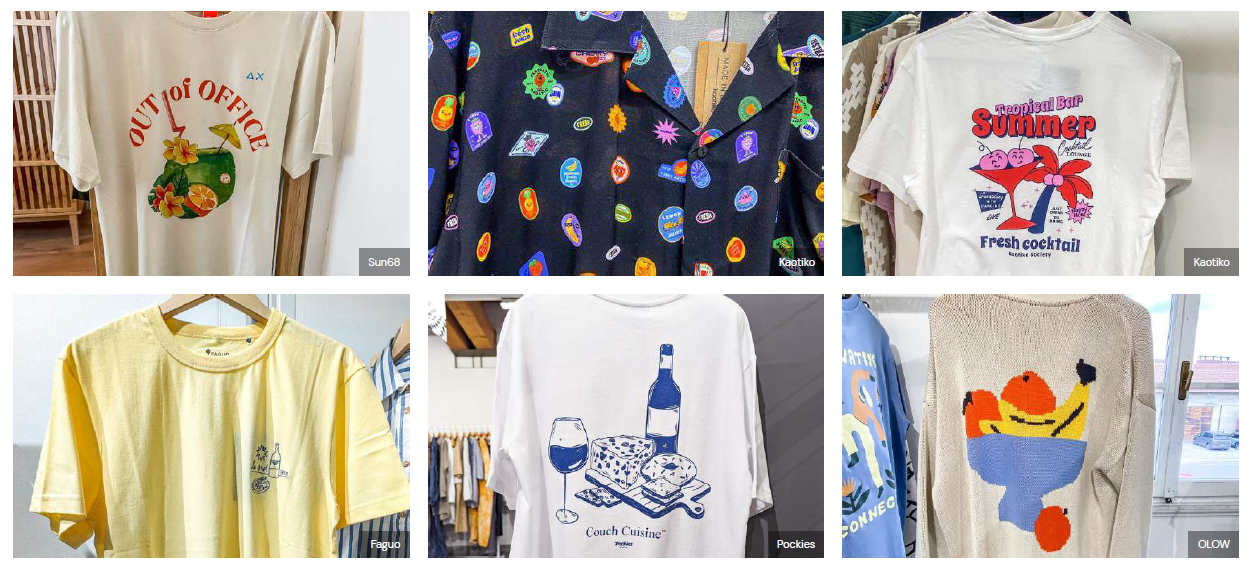
Figure 6: Sunset snacks trends 2024
Artistic maritime
In harmony with the artistic atmosphere of the season, timeless maritime trends receive a contemporary update with the use of #Watercolour and #PainterlyPattern techniques, perfectly in line with our Vacation moments forecast trend. This direction embraces a narrative approach, reminiscent of journaling and storytelling, connecting to #SummerSketchbook scenes and evoking nostalgia for charming destinations.
Imagine hand-painted fish motifs and scenic landscapes that transport you to idyllic coastal retreats. These elements come together to create a bolder and more expressive feel, as seen in the designs of French brand OLOW.
With #Watercolour and #PainterlyPattern techniques, fashion becomes a canvas for capturing the essence of summertime adventures and seaside memories. It’s about embracing the artistic spirit and infusing your wardrobe with the beauty of hand-drawn details and picturesque vistas.
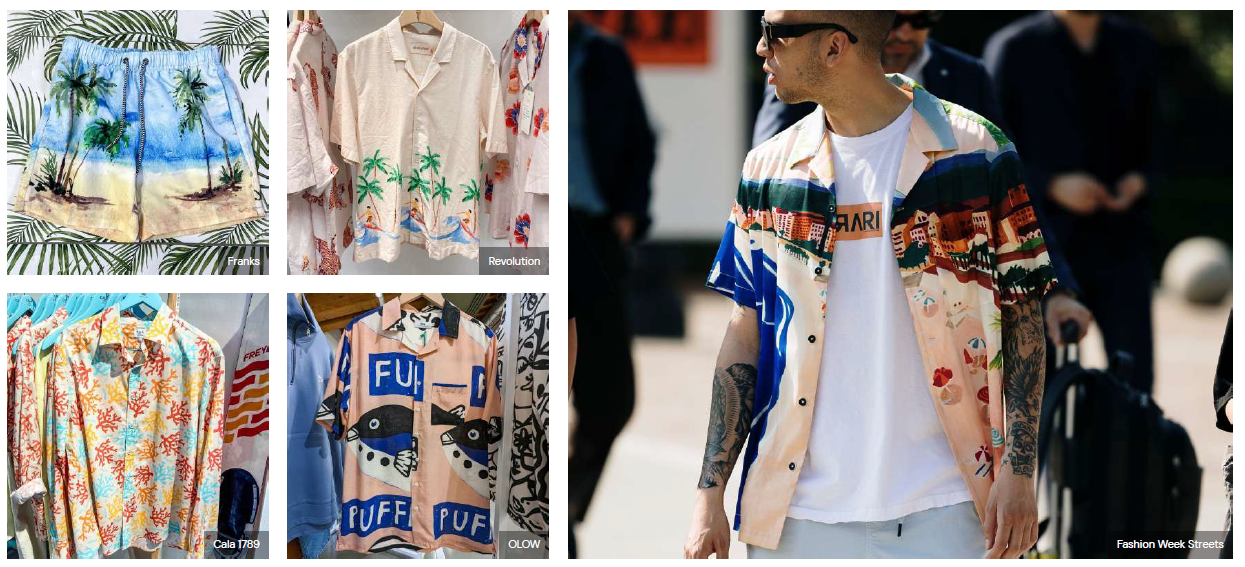
Figure 7: Artistic maritime trend 2024
Vibrant vacay
High summer prints burst with energy, capturing the vibrant essence of a vacation with electric garden florals and distorted dye patterns in vivid colors. Denmark’s ISNURH exemplifies the potential of Kornit digital printing capabilities, showcasing the remarkable color intensity achievable with biodegradable ink.
These prints evoke a sense of excitement and adventure, transporting wearers to sun-drenched destinations and lively tropical landscapes. Whether it’s bold floral motifs or abstract patterns reminiscent of swirling ocean waves, these designs infuse summer wardrobes with a burst of vitality and dynamism.
For further exploration, be sure to explore our Dopamine Summer design capsule, where you’ll find even more exhilarating prints and innovative techniques to elevate your summer style to new heights.
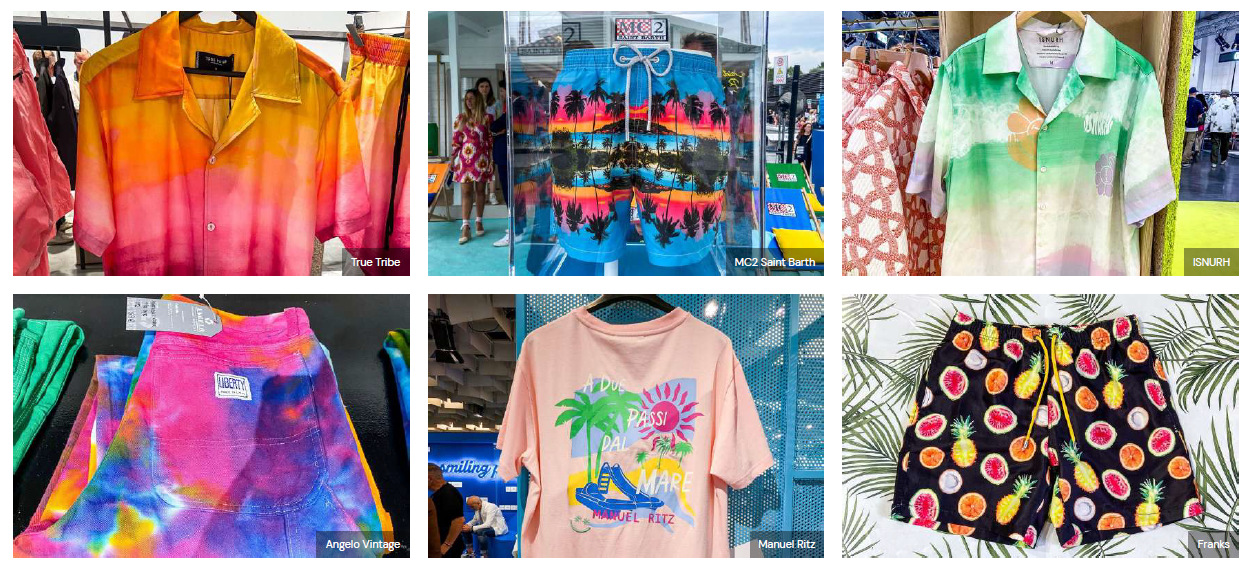
Figure 8: Vibrant vacay trend 2024
Barely there tonal
In the midst of busy and playful fashion ranges, #LowKeyLuxury collections offer a serene and understated elegance. We’ve been observing the evolution of #ToneOnTone prints, noting their transition into barely-there renditions, offering a subtle alternative to fabric interest items.
To achieve this minimalist aesthetic, consider circular monomaterial techniques such as same-thread embroidery, laser cutting, and delicate broderie. These methods create subtle textures and patterns that add depth without overwhelming the design.
Additionally, opt for water-based inks, which have a lower environmental impact compared to traditional printing methods. By prioritizing sustainability and simplicity, #LowKeyLuxury collections offer a refined and mindful approach to fashion, allowing individuals to express their style with quiet confidence.
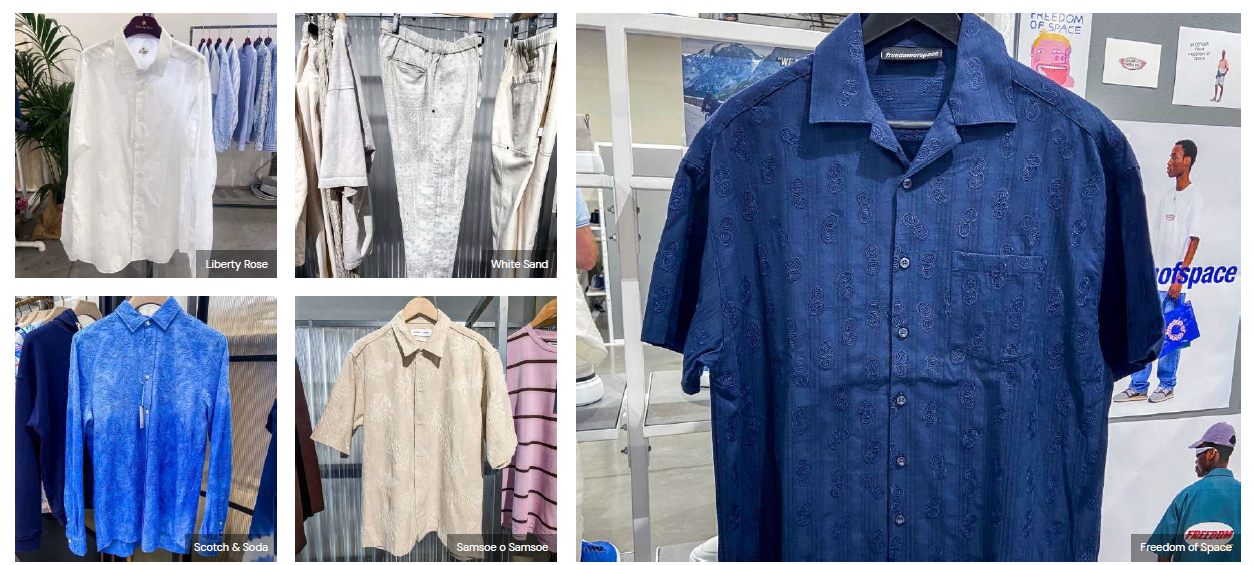
Figure 9: Barely there tonal trend 2024
Nautical collage
In a celebration of #JoyfulExpression and nautical themes, irregular shapes mingle with carefree motifs in stamped and blocked iterations. Brands embrace the trend of #CutoutPrints, incorporating scrap collage techniques to update traditional nautical motifs and sun prints with a playful twist.
These designs evoke a sense of joy and spontaneity, inviting wearers to embrace their adventurous spirit and express themselves freely. Whether it’s whimsical sea creatures or abstract shapes reminiscent of waves, these prints add a touch of lightheartedness to summer wardrobes.
The woven #ResortShirt emerges as a key silhouette to watch, with its projected growth supported by data from our UK and US TrendCurve+. With its relaxed fit and versatile styling options, the resort shirt promises to be a staple piece for those seeking effortless summer style.
Embrace the spirit of joyful expression and playful nautical motifs this season, and let your wardrobe reflect the carefree vibes of summer.
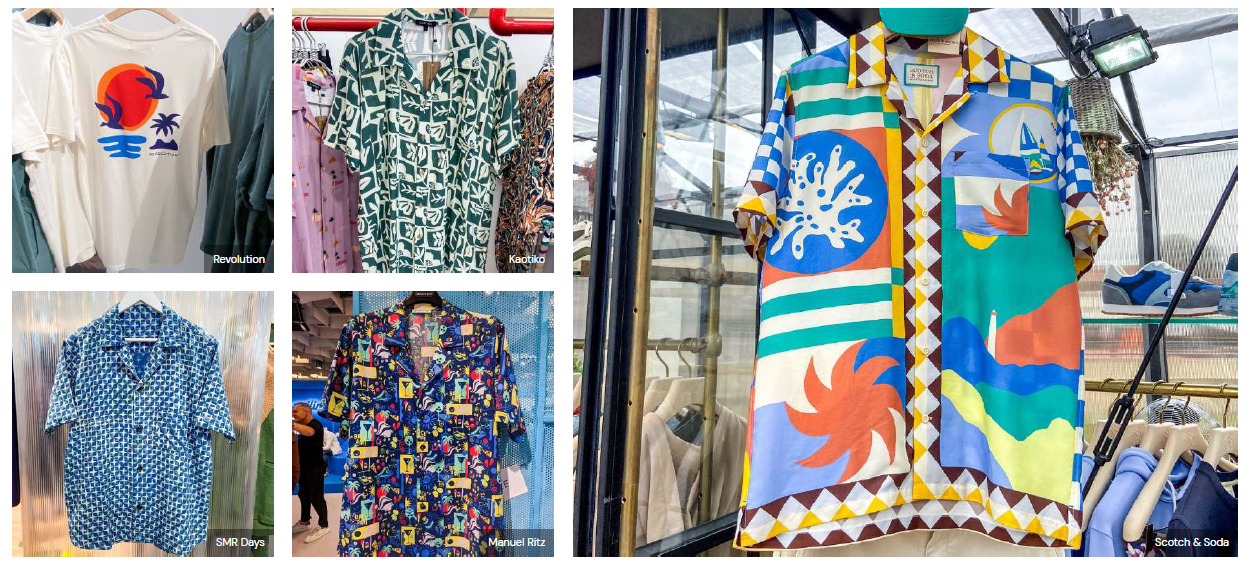
Figure 10: Nautical collage trend 2024
For more of our Fashion Trend knowledge bank:
We have a rich repository and knowledge bank of Fashion Trends, to read them you can click the following:
Men’s Elegance Unveiled: London Fashion Week S/S 24 Blends Modern Romance and Soft Grunge Trends
10 Hottest Lehengas for Women Trends for 2023-24
Top 5 Picks from RIHOAS that You Must Bag to Catch Up With the 2023 Fashion Trends
2023 Fashion Trends: 10 Biggest Fashion Trends of 2023
Trend Analysis and Fashion Trends of 2019
2023 Fashion Trends: 10 Biggest Fashion Trends of 2023
3 Trendy Casual Shirts You Should Buy for This Christmas!
Bimbo Fashion: Bimbo Trends, Bimbo Brands, Bimbo Clothing, Where to Buy and All You Need to Know!
Spring Summer 2022 Fashion Trends That You Can Understand From Watching The Fashion Shows
Fashion Trends 2021
Fashion in the 21st Century
The World of Mushrooms: Nature’s Palette for Fashion Inspiration
Feel free to write us at fashionnovationfd@gmail.com
We check your emails and publish your articles!
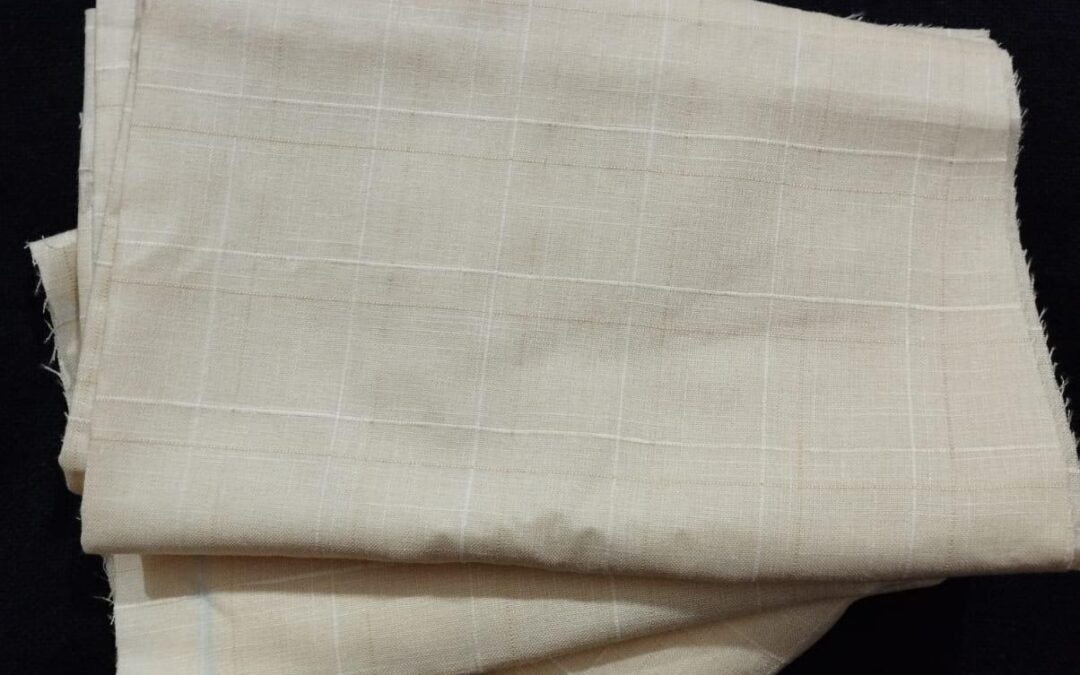
by Purba | Mar 21, 2024 | Academic |
Khadi is a versatile fabric which is hand spun and hand woven, capitally made with cotton but it can be also made with silk or wool. Since Khadi is not industrially manufactured just like other textiles, it is economical as it does not rely on electronic units and also environment friendly. The fabric is comfortable, lightly harsh and it gives cool feel in summer and warm in winter.
Khadi has a history in India, opposing British rule which was encouraged by Mahatma Gandhi during the Indian dependence movement. It was then used to boycott British goods and to empower the rural India . To bring it in the front, the government set up Khadi and Village Industries Commission to promote Khadi production in India . It was quite hard to acknowledge khadi to everyone as it was no longer to be traced. Later a dynamic change was recognized as khadi was economial than the others. The journey of khadi in Bangladesh was started in 1921 when Gandhi went to Chandina upazila ,located in Comilla. Hence many weaving centre were developed in Mainamati, Muradnagar etc. Khadi cottage ,Khadi house , Khadi Aarong etc. are some products of Comilla nowadays.
Khadi fabric can be of different types, such as: cotton khadi, silk khadi , lilen khadi, khadi silk cotton etc. Shirts, sarees, shawl, towel, bed sheet etc are made by Khadi fabric.
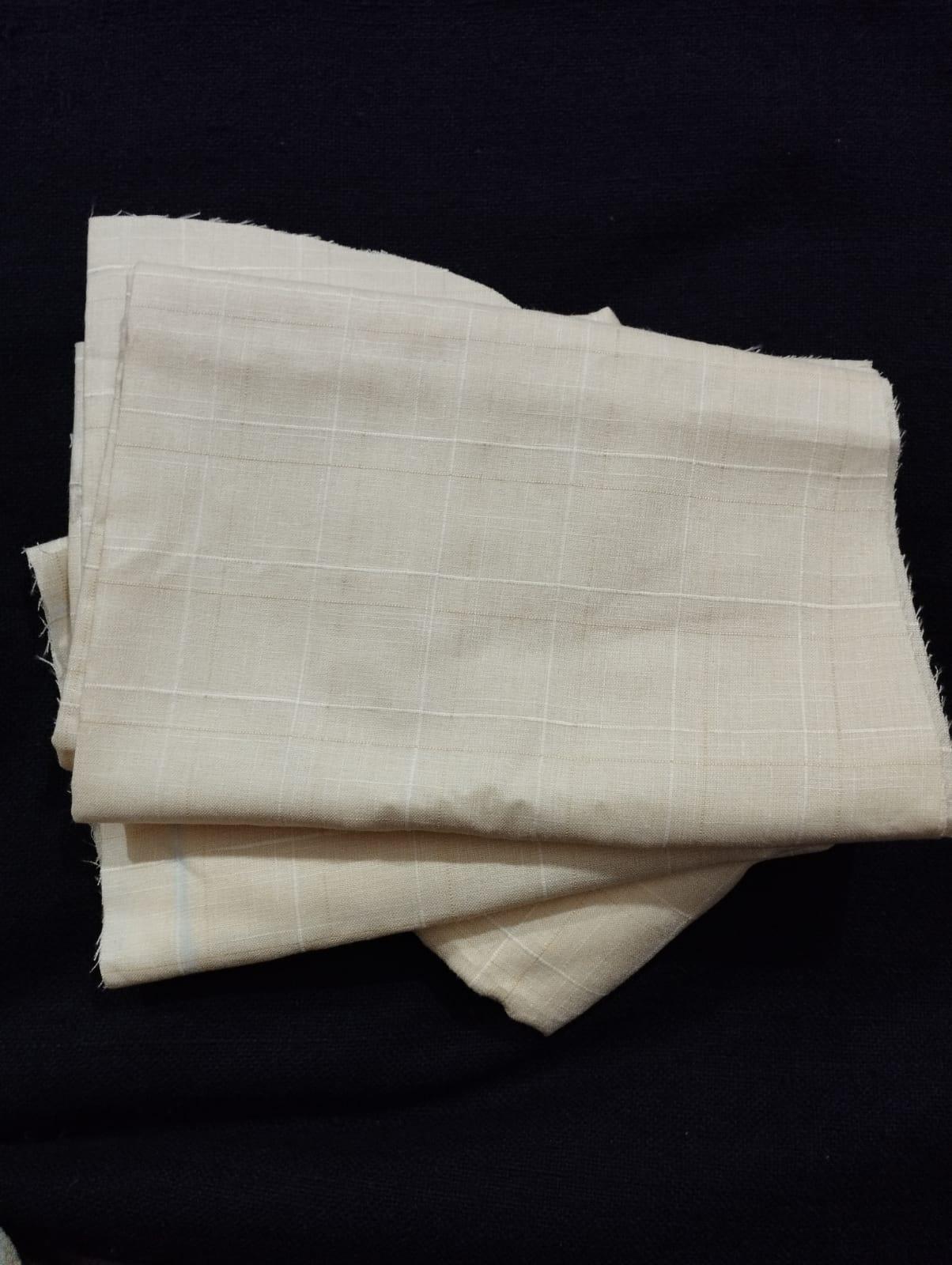
Khadi fabric. Photo courtesy: Author
Being a handspun material it has some problems such as lack of modern technologies, material crisis, lack of proper guidance or lack of proper marketing but having these obstacles it is still competing because of the development of culture, tradition, contribution to national economy and remembrance the rich history of it.
With the global change of marketing a new dimension has added to the Khadi products as it’s sustainable and a local product, designers are choosing it and making wonderful designs out of it. Earlier khadi was dyed in earthy tones but now muted tones are also used like brown, greens etc. in producing khadi fabric. It’s getting versatile day by day.
Recently The Fashion Design Counsil of Bangladesh (FDCB) had organized a khadi fest where an exhibition and fashion show was held on January 2024. The show represented a runway where the renowned Bangladeshi designers exerted their latest designs with the novelty of khadi.
Khadi is a sustainable, ecofriendly traditional garment which speaks the story of India’s freedom. Khadi has always been a part of our Bangali tradition also. It might be the future fabric renowned all over the world.
You can also read our articles on Muslin, silk, Nakshi Katha and Bengal motifs.
Reference :
- Textile Learner
- Textile Today
- Wikipedia
- Hindustan Times
Author:
Soumeen Tasnim
Department of Textile Fashion and Design (DoTFD)
Bangladesh University of Textiles (BUTEX)
































